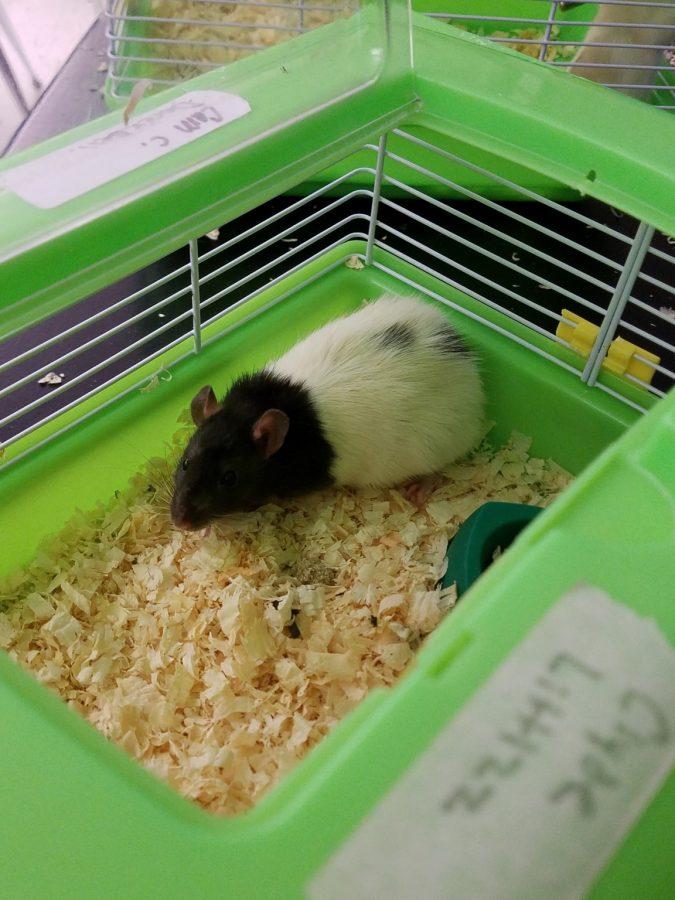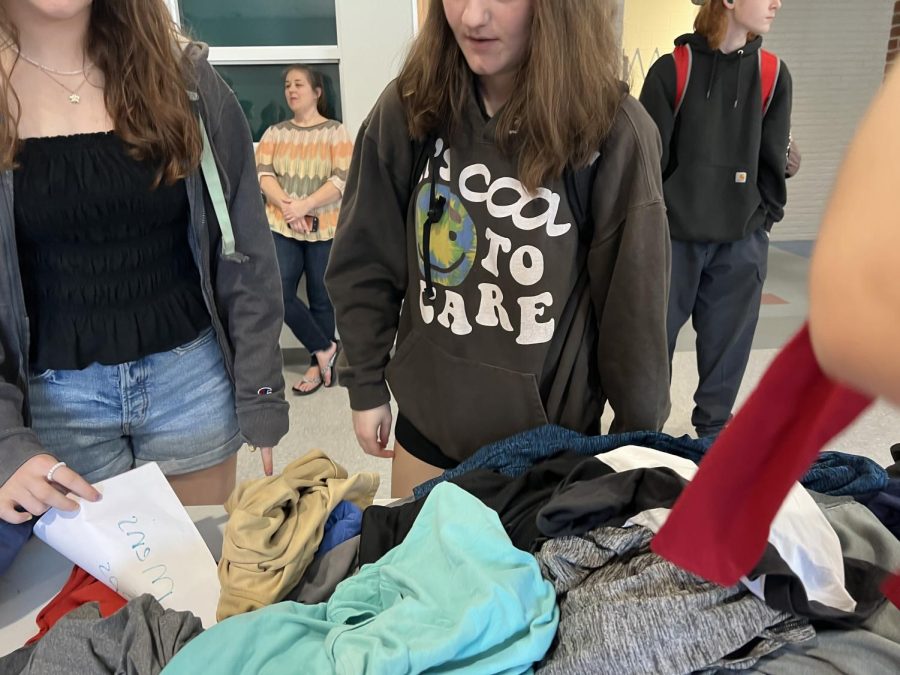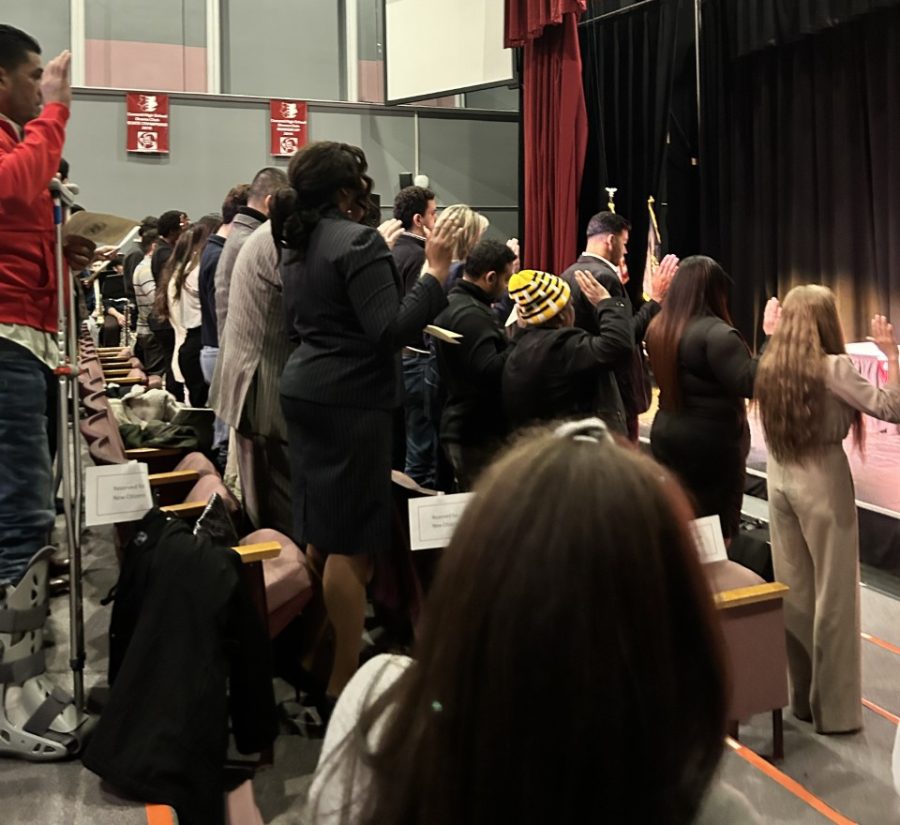Clyde Littlzz sits in his cage as he looks at the Concord High School seniors who share him for their animal behavior project: Derek Bell and the author of this feature, Cameron Clarke.
Clyde is one of “roughly 10 male and 20 females,” according to CHS science teacher Frank Harrison.
Weighing in at a whopping 190.8 grams during a recent Animal Behavior & Ecology class, Clyde is one of the largest rats in this year’s collection of specimens.
Despite his size, Clyde is one of few rats living in small cages until larger ones are available, as some old school-owned cages broke and had to be thrown away.
The rat project that Animal Behavior & Ecology students began early in March is an annual event here at CHS going back “at least 40 years,” Harrison said.
The rats typically stay inside one of the science rooms during the week. Student owners spend time with the rats and feed them there, taking them home on weekends and then bringing them back again Monday mornings.
Partners take turns shouldering responsibilities that include changing shavings in the cages, give rats food and entertaining and frequently weighing them.
Students serve as the rats’ primary caregivers. They become the rats’ new “parents.”
Caring for and training small animals such as rats is just one part of the class, according to the course description in the Program of Studies.
Students make field trips into the local environment and “explore through lecture, laboratory work and extensive field work the natural processes and phenomena of organisms in both the winter and spring environments as well as the evolutionary and ecological pressures that shape the behavior of animals.”
Asked his favorite aspect of the Animal Behavior & Ecology course, Harrison said, “I would say the students’ interaction with nature. We set out, the teacher is the wilderness, the teacher is the animal.”
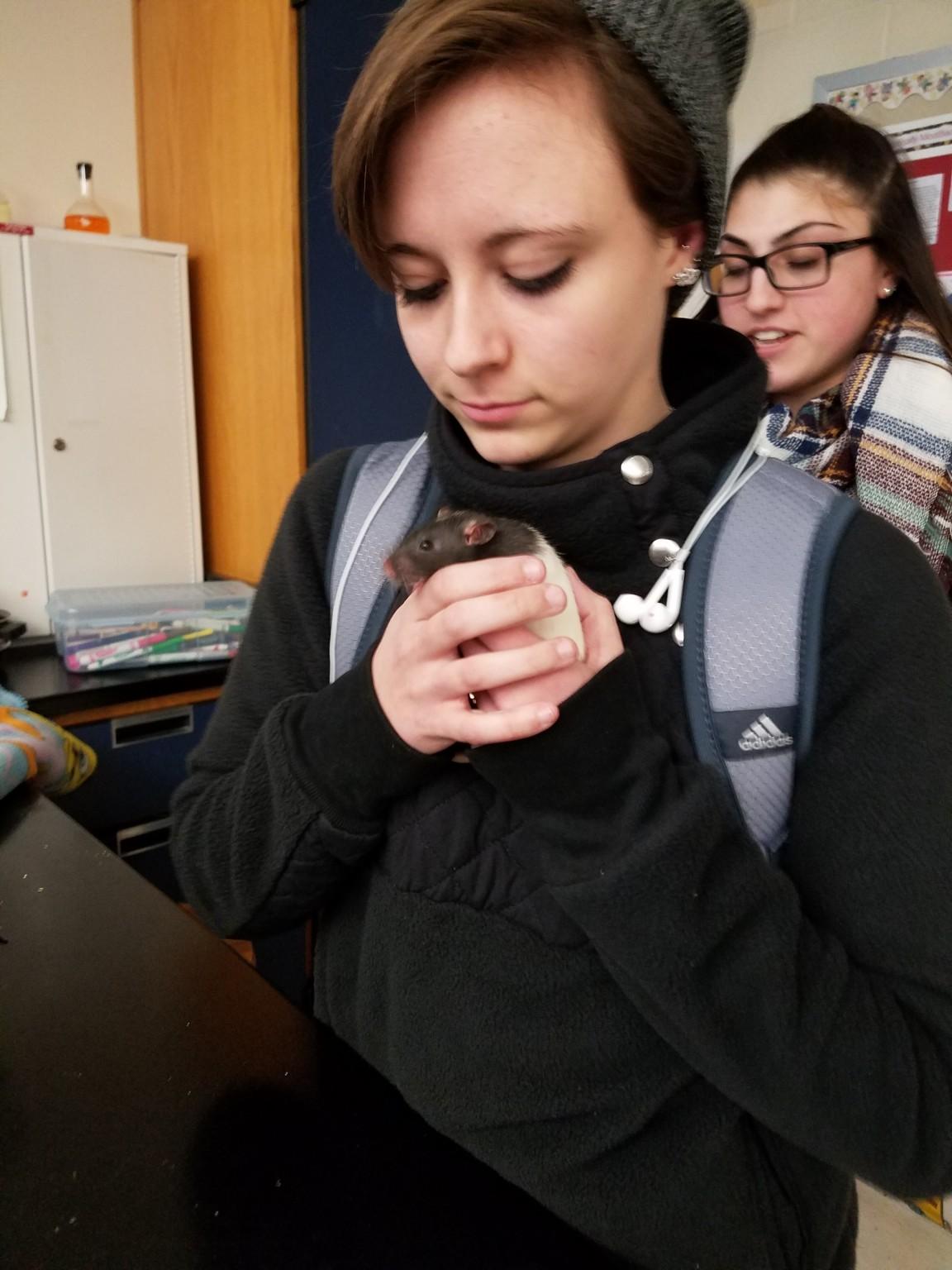 CHS senior Paige Cassidy (at left) admires her rat, Bonnie, as she gets ready to leave her at school for the night.
CHS senior Paige Cassidy (at left) admires her rat, Bonnie, as she gets ready to leave her at school for the night.
Cassidy has had prior experience with rodents from CHS science studies before.
Last year she took home two sister ferrets, Crash and Eddie, named after the cartoon creatures from the movie Ice Age, for a month or so to learn what it was like to raise ferrets.
Sadly, Crash passed away a short time ago. Harrison predicts Eddie will not last much longer.
Cassidy liked taking care of them so much, however, that she had looked forward to taking Animal Behavior & Ecology class since that time. Sometimes she and her partner have a tough time deciding who will take Bonnie home for the weekend.
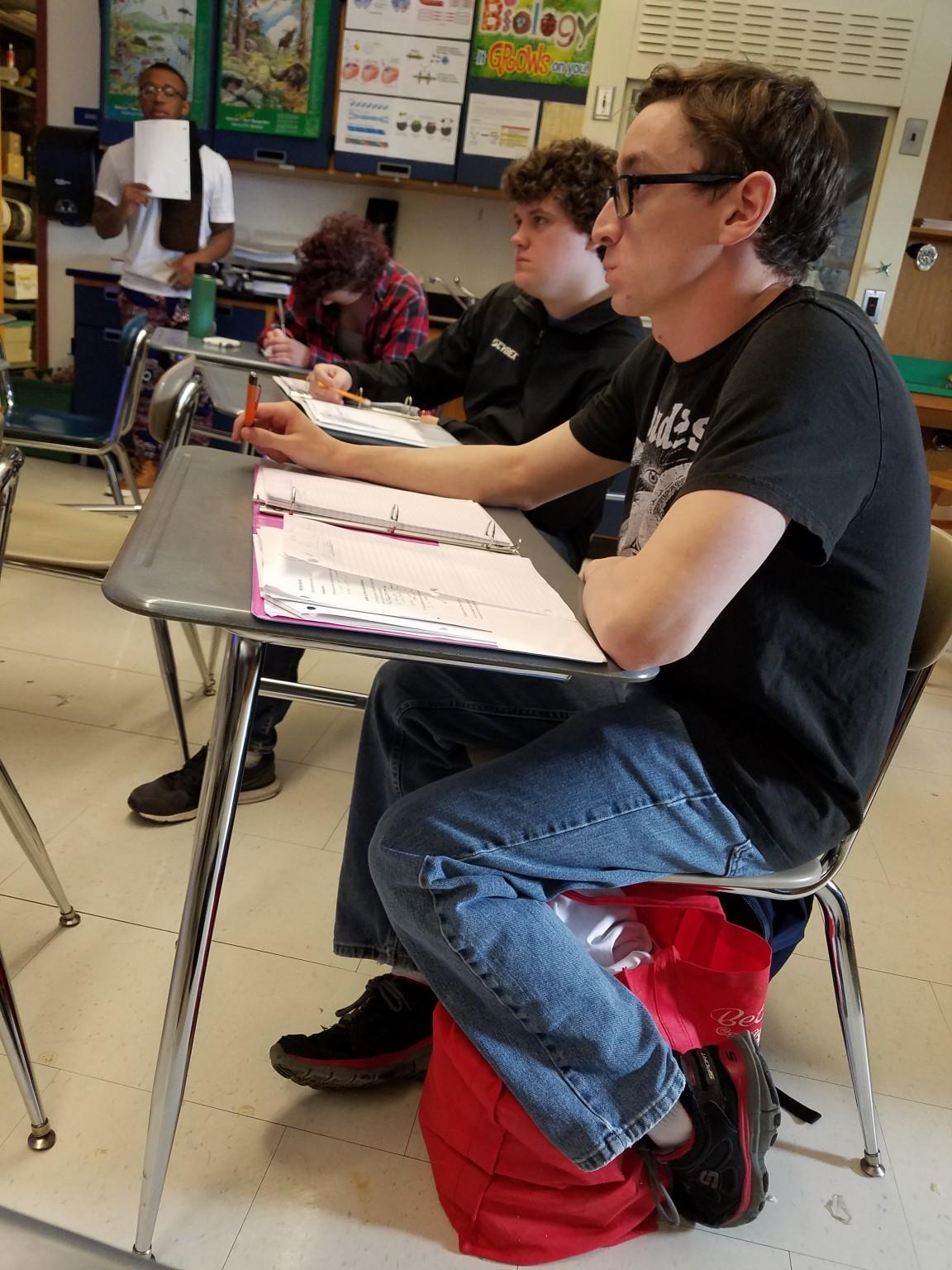 Students including seniors David Tumaini, Lucas Gustafsson and Maxwell Cross (left to right) take notes as Harrison recently explains proper methods to care for rats.
Students including seniors David Tumaini, Lucas Gustafsson and Maxwell Cross (left to right) take notes as Harrison recently explains proper methods to care for rats.
For example, he explained, not all kinds of wood are safe for their rats to chew on.
It’s harmful for rats to eat woods like birch, elm and oak but it’s safe for them to chew on pine, applewood, dogwood and some others.
It is the responsibility of students to find safe alternatives to toxic options, Harrison said, noting that stores like PetSmart and Petco sell safe wood toys and chew for rats and other rodents to fine-tune their teeth.
It’s just one of the many things the class has learned since taking on the responsibility of providing for a living, breathing animal that is dependent on the class to take care of them.
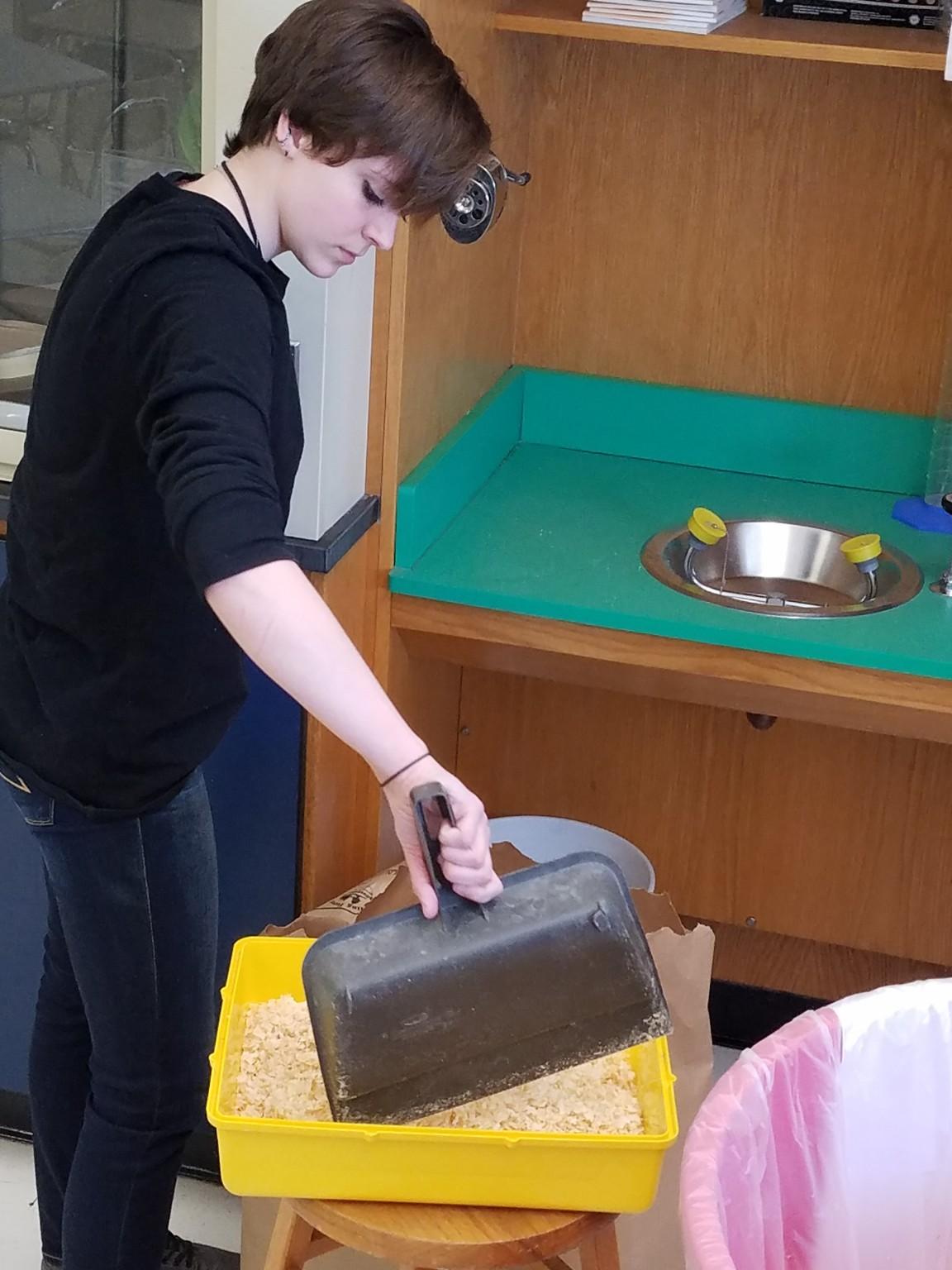 Cassidy (left) puts clean shavings in Bonnie’s yellow cage after dumping out the old ones and washing the cage with water and paper towels only to avoid harming her rat with chemicals from soap.
Cassidy (left) puts clean shavings in Bonnie’s yellow cage after dumping out the old ones and washing the cage with water and paper towels only to avoid harming her rat with chemicals from soap.
New shavings and food are always kept available for the students in Harrison’s room where the rats live during the week.
CHS provides food and shavings for the rats, going through perhaps a bale of shavings and at least three pounds per week. According to Harrison, this costs about “800 bucks” a year.
Students who adopt rats at the end of the project take over costs for their care.
Those who cannot keep the rats permanently, or simply don’t want to, particularly if they are heading off to college, can give them up for “adoption” by others. A rat’s future home is up to student partners, explained Harrison.


